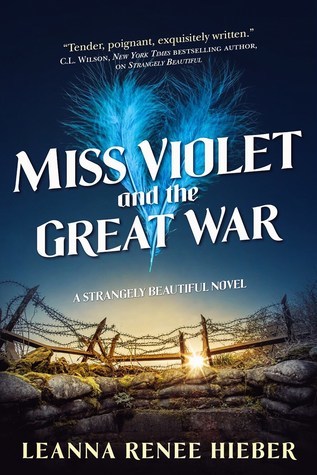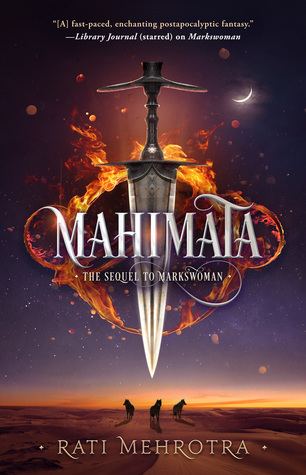Book Blog: The Vela by Yoon Ha Lee, Becky Chambers, S.L. Huang, and Rivers Solomon
I review everything I read and post reviews on Goodreads and LibraryThing. That’s not enough. Good books are meant to be shared. Therefore, I’m spotlighting some of my favorite reads here on my site.
The Vela by Yoon Ha Lee, Becky Chambers, S.L. Huang, and Rivers Solomon
available in text and audio, in episodes or in full, from the publisher, Serial Box
Summary from the publisher:
In the fading light of a dying star, a soldier for hire searches for a missing refugee ship and uncovers a universe-shattering secret.Asala Sikou is used to looking after number one while crisis reigns in her dying planetary system. But when she’s hired to find a missing refugee ship, she discovers that this is no ordinary rescue mission, and she must play a role in deciding the fate of the whole universe.
What I thought:
I was sent an early copy of this book from the publisher.
I’ve heard good things about Serial Box–and had friends work with them–but I had yet to read any of their serialized novels. I admit to some skepticism. In the case of The Vela I’ve read and loved three of the four authors in the project, and they have unique styles. How would a book flow together? Would it feel disjointed?
To my delight, yes, the book flowed together, and to my surprise, no, it didn’t feel disjointed or like related short stories. It worked–and very well at that, as these are among the best science fiction writers out there right now. Their individual approaches were noticeable if the reader is familiar with their works (S.L. Huang writes breathless action; Becky Chambers has a knack for subtle, emotional touches) but they flowed together seamlessly.
The Vela is action-packed and visceral, full of emotions, insight, and punch-to-the-gut revelations. The sun is dying, the planetary system with it. The worlds closest to the sun struggle onward as the outer planets succumb to frigid temperatures. Asala is a child refugee from a dying world, grown to become a skilled assassin and bodyguard. When the president of a privileged planet tasks her finding a lost refugee ship, she balks. She has no desire to revisit the dark memories and places of her past. The fact that the president is including his meddlesome hacker child in the mission makes it even more unappealing. However, an uneasy partnership is struck, and Asala soon finds that the search for the Vela will uncover secrets that could save–or destroy–the entire system.
Every character in this is complex and real. Asala has a grittiness to her that is still relatable. Niko, the nonbinary hacker, is idealistic to a fault; I want to add that it’s fantastic to see a nonbinary lead character, and it fully showed how gender wasn’t necessary to define who Niko was or how they behaved. The pacing of the book is extraordinary, especially in light of the alternating chapters by different authors. This is a space opera that really has it all–intense action, near-death scrapes, and tear-inducing scenes. I came to love these characters, and the dramatic conclusion left me in awe.
I’m adding this book to my shortlist for best novel nominees for this year. It’s that good.
Read MoreBook Blog: Miss Violet & the Great War by Leanna Renee Hieber
I review everything I read and post reviews on Goodreads and LibraryThing. That’s not enough. Good books are meant to be shared. Therefore, I’m spotlighting some of my favorite reads here on my site.
Miss Violet & the Great War by Leanna Renee Hieber
out this week; order at Indie Bound, B&N, or Amazon
I received this book through NetGalley.
Hauntingly hopeful, Miss Violet & the Great War explores the tragedy of the first World War with poetic grace. I found this not to be a book to blaze through in one sitting, but one to savor and appreciate in little bites. That’s not to say it’s a slow read, either. This is a book that felt like immersing myself into a cozily hot bath.
I’ve read one of the related books in Hieber’s world, The Eterna Files, and that was a few years ago now. I jumped into this fourth book in the current series and had no problem following along, and I immediately loved a number of characters. While The Eterna Files seemed to be more of a supernatural mystery to me, Miss Violet & the Great War comes across as more like a spiritual gothic in the very mode of early 20th century novels.
Though the book is about the horrific aspects of war, Hieber’s main focus is on the goodness and creativity of humanity. I’m rather left in awe by the grace of how she handled that. Miss Violet grows up haunted by visions of the War to come throughout her childhood, and prepares herself with intelligence and practicality; so many books are plagued by impulsive protagonists, and it’s refreshing to encounter one with such thoughtfulness and diligence. The latter half of the book is in the War itself, with battles of physical and spiritual natures.
I highly recommend this to readers interested in the Great War and historical fiction with a fantastical bent.
Read MoreBook Blog: Mahimata (Asiana #2) by Rati Mehrotra
I review everything I read and post reviews on Goodreads and LibraryThing. That’s not enough. Good books are meant to be shared. Therefore, I’m spotlighting some of my favorite reads here on my site.
Mahimata by Rati Mehrotra
order at IndieBound, Amazon, or B&N
Mahimata is the second book in a duology and will be released on March 5th. I had both books supplied to me gratis by the publisher (also my publisher) and loved both. If you haven’t read the first book, seriously, get it NOW and preorder the second book.
This is what I said about book one:
“Markswoman is a breathlessly-paced post-apocalyptic fantasy with a highly original setting and characters you can’t help but love (and hate).” To add to that: Post-apocalyptic magical knife-wielding female assassins FTW.
Rati Mehrotra’s Asiana duology comes to a fantastic conclusion in Mahimata. In this Asian-inspired fantasy settings with unique sci-fi twists, Kyra is a highly-trained assassin telekinetically bound with her blade. Her world has erupted in war. Her sect has fought against local wyr-wolves for centuries, but now a greater–human–threat has emerged and threatens to take over Asiana. In the turbulence of the first book, Kyra met and fell for Rustan, of a rival sect–and also almost died. As Mahimata begins, she struggles to recover physically and reconcile herself with what she has learned about her sect, her power, and her world.
The action is intense and well-grounded in genuine emotions. I especially love how the wyr-wolves developed. This is a book all about maturity and growth for both Kyra and Rustan as they fight to save their people at great cost. I’m sorry to see the series end, but this conclusion truly hits all the right notes.
Read MoreBook Blog: Classic American Crime Fiction of the 1920s edited by Leslie S. Klinger
I review everything I read and post reviews on Goodreads and LibraryThing. That’s not enough. Good books are meant to be shared. Therefore, I’m spotlighting some of my favorite reads here on my site.
Classic American Crime Fiction of the 1920s edited by Leslie S. Klinger
find this book on Barnes & Noble, Amazon, or like me, buy it signed from indie bookstore Poisoned Pen
This book is massive. 1100 pages, hardbound. This is the kind of book you want to use to wallop burglars. That’d be an especially appropriate use of this anthology, too, since it covers a full range of 1920s crime novels. Overall, it’s a fascinating read. You get the first books of several major detective series, like Charlie Chan and Ellery Queen. Even the book with an almost unbearable protagonist, Philo Vance, gave me oodles of useful research notes and an interesting mystery as the backbone of the piece. Dashiell Hammet’s first book is a veritable blood bath, but a masterfully done one at that. Reading Little Caesar, I can well understand how this established the gangster novel–and movie–genres.
There is a lengthy introduction at the start, giving context for each book. The annotations throughout were very useful (indeed, for the gangster novel Little Caesar, the lingo would’ve been a challenge to parse otherwise) but I also found myself wanting more annotations.
If you love classic mysteries and want a showcase book, this is worth the hefty price. (I bought my signed edition from Poisoned Pen Bookstore in Scottsdale, Arizona.) But do be aware it is a difficult read because of the sheer size of the book. Not only is this book impossible to tuck away in a purse to read on the go, it’s awkward to read wherever you may be. Still, I found the challenge to be more than worthwhile in the end.
My reviews for each included book are found below, and are also posted under the individual book listings on Goodreads and LibraryThing.
—
The House Without a Key: Charlie Chan #1 by Earl Derr Biggers
Charlie Chan is an iconic character, and it was interesting to see him within the context of his first novel, published with its original text. The book surprised me in many ways. First of all, the settings within the book are masterfully portrayed. I’ve never seen a book so vividly describe Hawaii in the 1920s. The annotations remarked a few times on inaccuracies or fictionalized bits, but many of the details felt spot-on (I say that, having extensively read on early 20th century Hawaii for my own novel). While I expected issues with racism and caricatures because of the era, this was not as bad as I expected it would be (how’s that for an endorsement?). Charlie Chan is regarded as something of a mockery now, but as the notes observed, he does not speak pidgin Chinese, but talks as a very highly educated man. The text of the book demonstrated that well. The way white characters reacted to Chan felt realistic (though sad), but I also understood well why the original text had Chan racist against the Japanese. Within the context of the time, that made perfect sense; it’s worth noting that these racist snippets were toned down or removed in later editions of the book.
This does not develop as a modern murder mystery does–often with a corpse in chapter one. Instead, the start is slow as the reader gets to know the Winterslip family of both Boston and Honolulu. The dead body doesn’t show up until almost a hundred pages in, with Charlie Chan’s arrival immediately after. I think my biggest surprise about the book was that Chan was a minor character with a pivotal role. Instead, most of the novel followed the stuffy scion of the Winterslip family. His was not a bad perspective–it was enjoyable to watch him grow across the book–but I expected a Charlie Chan book to, well, be more about Charlie Chan. The murderer was fairly obvious to be from early on, though there were some nice twists and turns leading up to the big reveal at the end.
I feel no urge to read onward in the series, but if I need to do more research on 1920s Hawaii, I just might. The book was not a bad read at all. Intriguing, I’d say.
—
The Benson Murder Case (Philo Vance #1) by S.S. Van Dine
I must say, the first chapter of this book convinced me that it was going to be absolutely dreadful. It probably didn’t help that preceding information in the book had pointed out that the Philo Vance series eventually withered and died because the insufferable, rambling nature of the lead character became too aggravating to bear. But once I made it past that initial introductory chapter and to the actual murder, the story was much more engaging.
The positives: It’s a good murder mystery. The set-up is complex and intriguing, and it nicely utilizes New York City. Alvin Benson is found dead, shot in the head, and the clues in his house are myriad, from the handbag and gloves left on the mantle to the car parked out front during the night. The district attorney invites his friend Philo Vance to see the crime, and on a whim, the insufferable art collector digs into the mystery, and digs in deep. The way Philo Vance psychologically examines people is fascinating. I liked that I guessed the murderer quite early on.
The negatives: Philo Vance. He’s aggravating. He boasts throughout that he’s known who the murderer is from the time he first viewed the corpse at the crime scene, but he strings along his DA friend for days, relentlessly teasing him and shredding apart his reliance on circumstantial evidence. While the latter is necessary (the DA was ready to convict several people on tenuous evidence), the whole know-it-all aspect gets old really fast.
The choice of narrator felt utterly useless, too. Another of Vance’s friends is the observer of everything, and he contributes nothing to the story. He’s no Watson, there to offer occasional advice or act as a foil or do medical examinations. No, this guy is just there, a shadow. I can’t even remember his name; it only came up at the very beginning, I think.
The annotations probably helped my reading experience a lot, too, providing translations or context for the French and Latin Vance often employs, explaining Vance’s commentary on art, and noting what NYC locations were real and fictional. Interestingly, the author muddled a lot of period details himself. By the calendar within the book, the murder should be set in 1918, but various details on geographical locations or police technology didn’t exist until the early 1920s. Writers these days can check those kinds of things through Google…
I wouldn’t read onward in this series, I think, because the very idea of Philo Vance becoming even more annoying is a big turn off. That said, this book offered me a tremendous boon in terms of research, with fantastic period details and cultural references.
—
The Roman Hat Mystery by Ellery Queen
Thus far in this collection, I’ve read the first books about Charlie Chan and Philo Vance. Both had issues, from my modern perspective–a painfully slow start and barely any Charlie Chan in the first, and the rambling, annoying presence of Philo Vance in the second. But in this, the first Ellery Queen novel, I finally encountered a 1920s mystery I absolutely loved. The writing is fantastic from page one, the mystery utterly intriguing, and the cast of characters diverse and amusing. I could see myself reading and enjoying more Ellery Queen novels.
—
Red Harvest (The Continental Op #1) by Dashiell Hammett
Red Harvest is aptly named, a bloodbath of a 1920s noir novel. When the unnamed private detective rolls into Personville to meet a new client, the client is found murdered. The Op goes about solving that murder, and becomes embroiled in pretty intense gang warfare that gets far nastier after the original murder is solved. This is a fast read, with knife-sharp language and wit. The Op is a character with virtually no background or personality, but he has a brutal edge and a will to survive. It’s no wonder this character helped to establish the very trope of the hard-boiled PI, complete with steady applications of scotch.
—
Little Caesar by W.R. Burnett
Little Caesar is the first major gangster novel, published in 1929. It was made into a famous 1931 movie–and essentially created the gangster stereotype (one I became most familiar with through Bugs Bunny cartoons). The book itself is an interesting study on the ‘voice’ of a book, as the author goes deep into gangster lingo. At the end of my edition, the editor included a foreword that the author wrote in the 1950s about the writing and rejection process behind the book. He made a conscious choice to strip away adjectives to make the prose bloody and blunt. It works. The book doesn’t try to make you like its characters–it just shows them as they are. I was grateful to have the annotations to help me parse the lingo and explain details about Chicago and guns of the period.
I never would have expected to like the book this much, but it fascinated me. It shows the era with all its ugliness and racism and dames and plates of spaghetti with wine. Now I want to watch the movie to compare.
Read More








